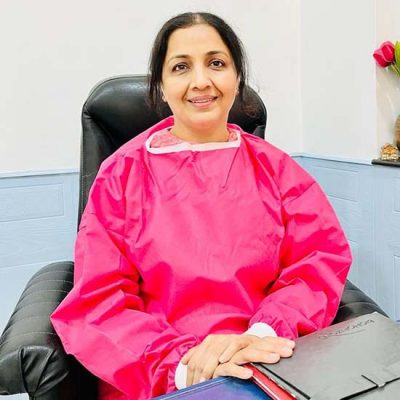When we want to rehabilitate a patient on implants, the choice of the type of prosthesis should be chosen at the time we plan the treatment, that is, the type of prosthesis that we use must be the one that guides us at the time of performing the surgery. There are different types of prostheses to be able to rehabilitate a patient with implants, they can be fixed or removable, and inside the fixed prosthesis they can be screwed to the implants, or cemented. Depending on each case, one option or another will be better when rehabilitating the patient.
A complete hybrid prosthesis is an acrylic prosthesis that remains fixed in the mouth thanks to the help of dental implants. It is an option in the treatment of implant rehabilitation, which allows the patient to have new fixed teeth and recover their aesthetics and masticatory function. Characteristics of hybrid prostheses:
- It is a completely fixed prosthesis
- Gives a moderate support to the upper lip
- Gives patients very good aesthetics
- It usually takes between 4 and 6 implants to rehabilitate the upper arch and 4 implants to rehabilitate the lower arch
The hybrid prosthesis consists of a metal structure to give it greater robustness, covered with acrylic and at the same time supports the artificial fixed teeth of acrylic resin. To anchor the prosthesis in the bone, 6 osseointegrated implants are required per dental arch.
The implants are communicated by a metal bar and on this bar the acrylic or resin prosthesis is fused, which will have the holes where we will have to tighten the screws to anchor the prosthesis to the bone. As advantages provided by hybrid prostheses we have that they are cheaper than porcelain crowns on metal or zirconium. In addition, in the case of having to make a change over time, it is much simpler, cheaper and faster.
The disadvantage of hybrid prostheses compared to porcelain teeth is that they are slightly less aesthetic. But currently, with the new acrylics we can achieve very high aesthetic results. On the other hand, this type of dental prosthesis improves the aesthetics more than those of porcelain in cases in which it is necessary to support the upper lip or artificial gum must be placed. Another disadvantage that we have to provide is when it comes to sanitizing the prosthesis, which will be more complicated than with removable prostheses.
The hybrid prostheses on implants are designed through the computer by a program called CAD-CAM The metal is made, either titanium or chromium-nickel, on which the artificial pink gum and the prefabricated teeth will be placed. This type of prosthesis is indicated for patients with moderate bone loss, its main advantage being that they do not have a palate and are very aesthetic, comfortable and comfortable for the patient.
This type of prosthesis is screwed onto the dental implants and for the patient they are completely fixed and can not be removed, although in the case that it is necessary to modify or touch up any part of the prosthesis, the dentist can easily remove it from the mouth of the dentist. patient.
Fixed prosthesis screwed on implants (metal-ceramic)

The ceramic metal prostheses on dental implants serve to rehabilitate the denture in completely edentulous patients.
Fixed prosthetic rehabilitation with implants is the ideal solution in fully edentulous patients. When there is an alveolar ridge and sufficient bone mass and it is possible to place a number of titanium implants of adequate length and distribution.
The aim of the treatment is that the patient can take an implant-supported prosthetic restoration as functional and aesthetic as possible. Dental implants can support single crowns, bridges, or even implant-supported prostheses with full arches. The latter can be made of different materials.
The ceramic metal prosthesis on implants combines a metal structure with ceramic teeth to achieve a better naturality of the fixed teeth and a superior aesthetic result compared to the hybrid or metal resin prosthesis.
When there is no bone loss we bet on the All-on-6® and the All-on4®. This technique is appropriate to replace all the teeth and rehablite the upper jaw and lower jaw when a serious reabsorption of the bone has not yet been detected.
It consists of placing only six implants above, in the maxilla, using the Nobel Biocare system that is commercially known as an implant as All-on-6®. And four implants below, in the jaw, using the system that is commercially known as All-on-4®, instead of using the traditional technique of unitary implants for the total rehabilitation of the mouth.
This will allow us to make and place a fixed acrylic dental prosthesis in the first twenty-four hours after surgery. What gives this type of implants its characteristic of immediate function. A few months after the surgery, the definitive dental prosthesis is placed. It is also a fixed prosthesis, tailored to the patient’s needs, and in which higher quality materials are used, providing greater aesthetics. These techniques are fast, safe and predictable.


